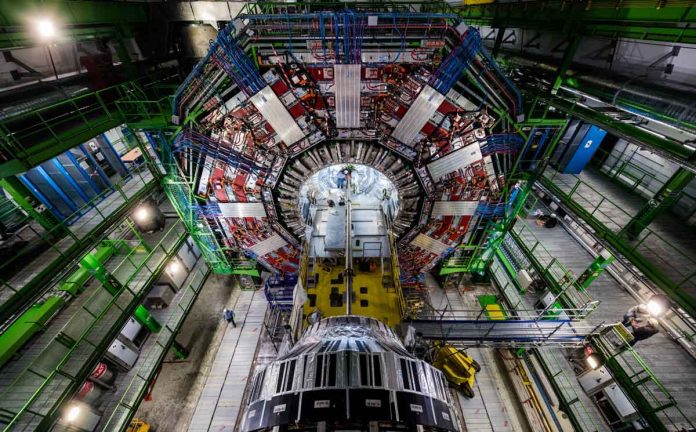The CMS collaboration at the Large Hadron Collider (LHC) has carried out a new test on a model that was developed to explain the tiny mass of neutrinos. They are electrically neutral particles that change type as they travel through space.
The particles cannot be broken down into smaller constituents. Quarks and electrons gain their mass through their interactions with a fundamental field associated with the Higgs boson. The neutrinos are the exception here. As this Higgs mechanism cannot explain their mass. Physicists are therefore investigating alternative explanations for the mass of neutrinos.
One popular theoretical explanation is a mechanism that pairs up a known light neutrino with a hypothetical heavy neutrino. The heavier neutrino plays the part of a larger child on a seesaw. It lifts the lighter neutrino to give it a small mass. The neutrinos would need to be Majorana particles.
The CMS team tested the seesaw model by searching for Majorana neutrinos produced through a specific process. It is called vector-boson fusion. In data from high-energy collisions at the LHC collected by the CMS detector between 2016 and 2018. These collision events would result in two muonshad the same electric charge.
The CMS researchers found no signs of Majorana neutrinos in the data. After identifying and subtracting a background of collision events that look almost the same as the sought-after events. They were able to set new bounds on a parameter of the seesaw model that describes the quantum mixing between a known light neutrino and a hypothetical heavy neutrino.

